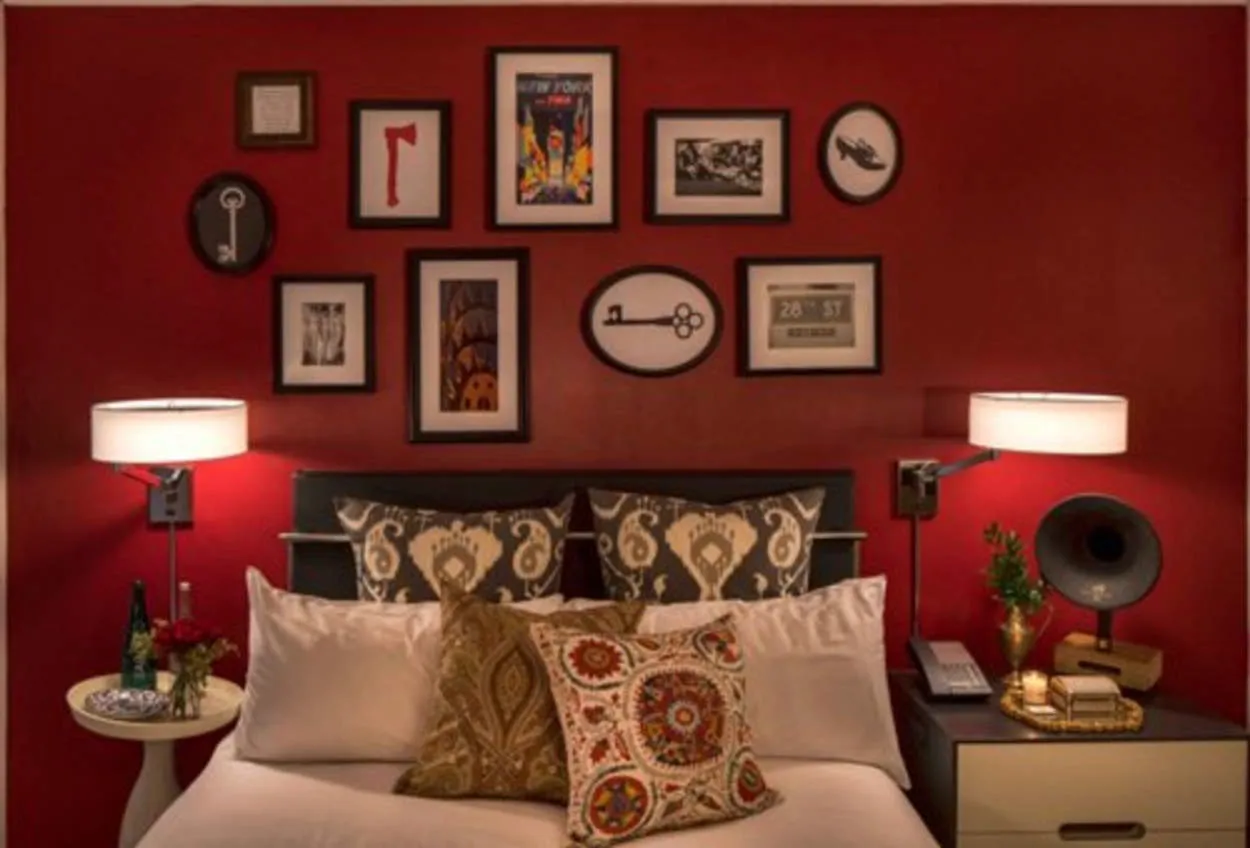Did you know that the color of your bedroom walls can have a significant impact on your mood and emotions? In this article, we will delve into the fascinating world of bedroom color psychology and explore how different hues can affect your overall well-being and quality of sleep.
Understanding Color Psychology
In the realm of interior design, color psychology plays a significant role in creating the desired atmosphere and mood. The choice of colors can greatly impact how a person feels and behaves in a particular space. This article will focus on the topic of bedroom color psychology and how different hues can affect one’s mood.
The Power of Blue
Blue is often associated with calmness and tranquility. When used in a bedroom, it has the potential to lower heart rate and blood pressure, promoting a sense of relaxation. Lighter shades, such as sky blue, can evoke a peaceful ambiance, while deeper blues may create a more luxurious and elegant atmosphere.
The Soothing Nature of Green
Green is a color that represents nature and can bring a refreshing and rejuvenating feel to a bedroom. It has a calming effect and can help reduce anxiety and stress. Lighter shades of green, like mint or sage, can provide a sense of serenity, while darker greens can add a touch of sophistication and opulence.
Warmth and Comfort with Earth Tones
Earth tones, such as browns, beiges, and warm neutrals, create a cozy and inviting atmosphere in a bedroom. These colors are reminiscent of nature and can evoke a sense of warmth and comfort. Earth tones also stimulate a feeling of stability and security, making them ideal for creating a peaceful sleeping environment.
The Energizing Effect of Yellow
Yellow is a color associated with happiness, optimism, and energy. It can uplift the mood and create a vibrant atmosphere in a bedroom. Lighter shades, like sunny yellow, can bring a sense of cheerfulness, while deeper yellows, like mustard, can add a touch of richness and depth to the space.
The Passion of Red
Red is a powerful and intense color that stimulates passion and excitement. However, it is important to use this color sparingly in a bedroom as it can be quite energizing. Soft shades of red, such as coral or pink, can bring a touch of romance and add warmth to the room.
When choosing the color scheme for your bedroom, it is crucial to consider the emotions and mood you want to evoke. Understanding color psychology can help you create a space that not only looks aesthetically pleasing but also promotes a positive and peaceful state of mind.
Choosing Calming Bedroom Colors
When it comes to creating a peaceful and relaxing atmosphere in your bedroom, choosing the right colors is essential. The colors you surround yourself with can significantly impact your mood and overall well-being. That’s why understanding the psychology of bedroom colors is crucial for creating a serene space.
1. Blue: Known for its calming effects, blue is an excellent choice for a bedroom color. It promotes relaxation and tranquility, making it easier to unwind after a long day.
2. Green: Similar to blue, green is also associated with a sense of calmness and harmony. It creates a soothing and refreshing ambiance, ideal for promoting a good night’s sleep.
3. Lavender: This soft shade of purple is known for its stress-reducing properties. Lavender promotes relaxation and helps to create a peaceful environment, perfect for a bedroom retreat.
4. Gray: A neutral color like gray can create a serene and sophisticated atmosphere. It provides a sense of calmness while allowing other decorative elements to stand out.
5. Beige: Another neutral option, beige, is often used to create a warm and relaxing space. It helps to evoke a sense of ease and comfort, making it an excellent choice for a bedroom color.
Remember, everyone’s perception of color can vary, so it’s essential to select colors that personally resonate with you. Experiment with different shades and consider the overall mood you want to achieve in your bedroom. The key is to create a calming sanctuary that promotes relaxation and helps you get a good night’s sleep.
Impact of Bold Colors
In the world of interior design, color psychology plays an important role in creating a desired atmosphere. When it comes to bedrooms, the choice of colors can significantly affect your mood and overall well-being. Bold colors, in particular, have a strong impact on the ambiance of a bedroom.
Using bold colors in your bedroom can evoke various emotions and create different vibes. Here are a few examples:
1. Red:
Red is a vibrant and energetic color. It is associated with passion, excitement, and increased heart rate. Adding red to your bedroom can create a sense of stimulation and intensity. However, too much red can be overwhelming and may disrupt your sleep.
2. Blue:
Blue is known for its calming and soothing effect. It promotes relaxation and serenity, making it an excellent choice for bedrooms. Lighter shades of blue can help lower blood pressure and heart rate, promoting better sleep.
3. Yellow:
Yellow is a cheerful and uplifting color. It is associated with happiness and optimism. Adding touches of yellow to your bedroom can create a lively and energized atmosphere. However, excessive yellow can cause agitation and anxiety.
4. Green:
Green represents nature and harmony. It has a calming effect, similar to blue. Green is often linked to feelings of balance and tranquility, making it a popular choice for bedrooms. It can also promote a sense of renewal and freshness.
When using bold colors in your bedroom, it’s important to find the right balance. Too much intensity can be overwhelming, while too little may not have the desired effect. Experimenting with different shades and combinations can help you create the perfect ambiance for a good night’s sleep.
Neutral Tones for Relaxation
When it comes to creating a calming and relaxing atmosphere in your bedroom, choosing the right colors is crucial. One popular approach is to opt for neutral tones, which have been shown to have a soothing effect on the mind and body.
Neutral tones include shades of beige, gray, taupe, and ivory. These colors are often associated with nature and have a timeless and peaceful quality to them. By incorporating neutral tones into your bedroom decor, you can create a serene and tranquil space that promotes relaxation and restful sleep.
The simplicity and understated elegance of neutral colors can also help reduce visual clutter, providing a sense of calm and order in your bedroom. This can be particularly beneficial if you have a busy or hectic lifestyle, as your bedroom should serve as a sanctuary where you can unwind and recharge.
Another advantage of neutral tones is their versatility. They can easily complement various styles and themes, making them suitable for any bedroom design. Whether you prefer a modern, minimalist look, a cozy cottage ambiance, or a sleek and sophisticated atmosphere, neutral colors can effortlessly blend in and enhance the overall aesthetic of your bedroom.
In addition to their calming effect, neutral tones can also make a small bedroom appear larger and more open. By reflecting light and creating a sense of airiness, these colors can visually expand the space, making it feel less cramped and more inviting.
In conclusion, choosing neutral tones for your bedroom can have a significant impact on your mood and well-being. Their calming and versatile nature, along with their ability to reduce visual clutter and create a sense of spaciousness, make them an ideal choice for creating a peaceful retreat in your home.
Creating a Mood with Color
Color plays a significant role in influencing our mood and emotions. This is especially true when it comes to the colors used in our bedroom, as it is a space where we seek relaxation and tranquility. Understanding the psychology of color can help us choose the perfect hues that align with our desired mood.
1. Warm Colors: Shades like red, orange, and yellow are known to evoke feelings of warmth, energy, and positivity. These vibrant hues can be great for creating an inviting and lively atmosphere in your bedroom.
2. Cool Colors: On the other hand, cool colors such as blue, green, and purple tend to promote calmness, serenity, and relaxation. These shades are ideal for those looking to create a soothing and peaceful ambiance in their bedroom.
3. Neutral Colors: White, beige, and gray are considered neutral colors with a calming effect. They can be used as a backdrop for any color scheme and are known for creating a sense of balance and simplicity in the bedroom.
4. Accent Colors: Adding pops of vibrant colors as accents can enhance the mood in your bedroom. For example, a small artwork or decorative pillows in bold hues can bring energy and personality to an otherwise neutral room.
5. Personal Preference: While color psychology provides general insights, it’s essential to consider personal preferences and individual associations with specific colors. Each person may have unique reactions and emotions tied to different hues.
By understanding the effects of different colors on our mood, we can create a bedroom that promotes relaxation, rejuvenation, or any desired feeling. Experimenting with various color combinations can help us find the perfect palette that aligns with our personal style and enhances our well-being.
Conclusion
Choosing the right color for your bedroom can have a significant impact on your mood. Warm colors like red and orange can create a cozy and energizing atmosphere, while cool colors like blue and green promote calmness and relaxation. Neutral colors like beige and gray provide a sense of balance. Ultimately, understanding the psychology of colors can help you create a harmonious and comfortable space to unwind and recharge.




